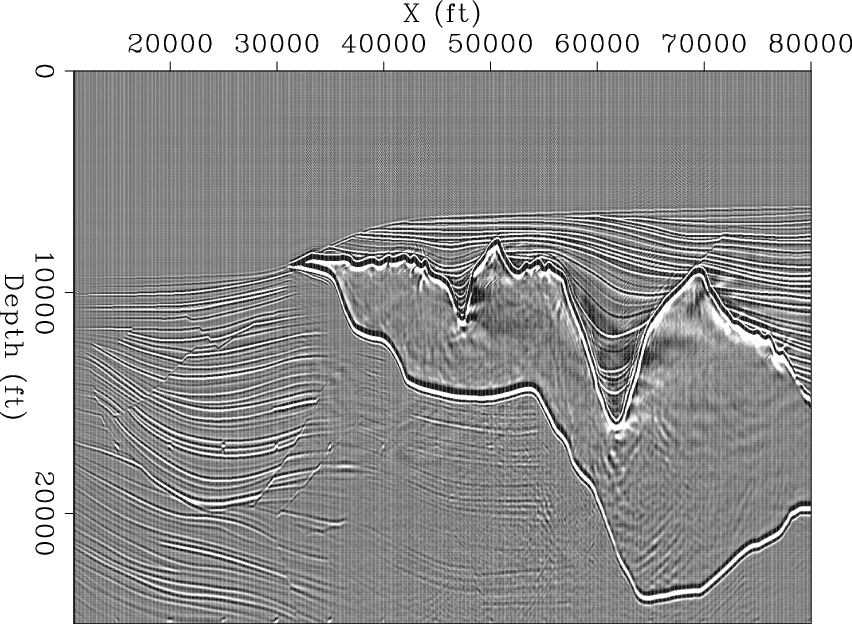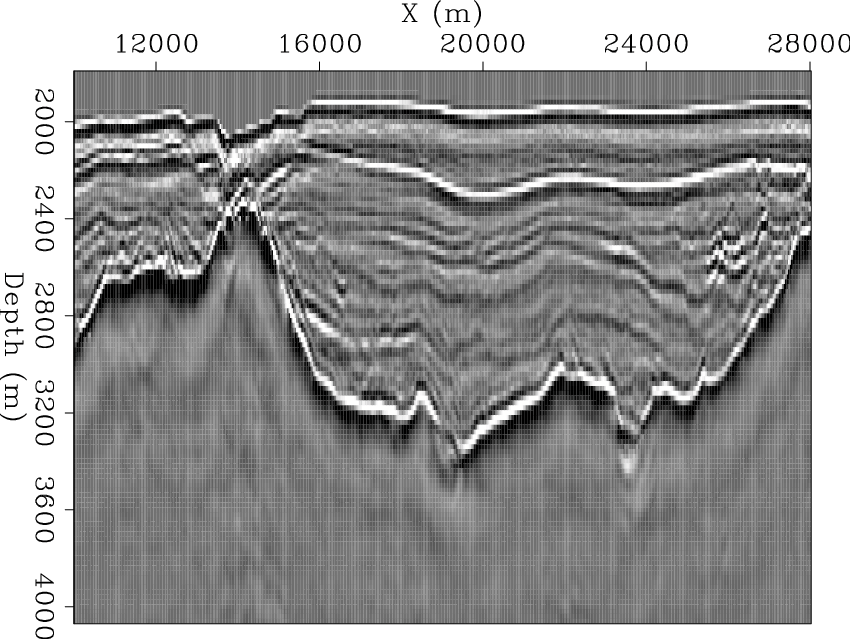|
|
|
|
A new method for more efficient seismic image segmentation |
A proper salt interpretation is one necessary component of any imaging project where salt bodies play a prominent role in the subsurface geology. Because of the sharp velocity contrast between salt and nearly any other material, inaccurate placement of salt boundaries has a disproportionate effect on the accuracy of the resulting velocity model. Such errors can have damaging imaging and engineering consequences. Unfortunately, interpreting salt boundaries is not only crucial, but also extremely tedious and time-consuming when undertaken manually. Thus, while some degree of automation would be ideal for salt picking, any such method must be highly accurate as well as efficient.
One approach to implementing automatic salt-picking is to use graph-based image segmentation. In this method, each pixel in a seismic image is treated as a node or vertex in a graph; then edges are constructed between specific pixels and weighted according to some property. Image segments are created by partitioning the graph - here, a partition is a salt boundary.
In this paper, I will review a previous effort to apply a graph-based image segmentation algorithm to seismic data, and then introduce a new, more efficient method using an algorithm from Felzenszwalb and Huttenlocher (2004). Since seismic images are very different from more ``conventional'' images (such as photographs) for which this newer algorithm was designed, I will detail several modifications necessary for the algorithm to be useful for seismic images. Finally, I demonstrate the results of applying the new method to the examples seen in Figures 1(a) and 1(b), and (for the field data example) compare these results with those obtained using the previous algorithm.


|
|---|
|
zig-img,uno-img
Figure 1. A perfect-velocity migration of the Sigsbee synthetic model (a), and a field seismic image (b) that will be used as examples throughout this paper. |
|
|
|
|
|
|
A new method for more efficient seismic image segmentation |